ccccccccc
Schon mal ein Cover der Zeitschrift Genes to Cells gesehen? Nein? Hier ist eins:
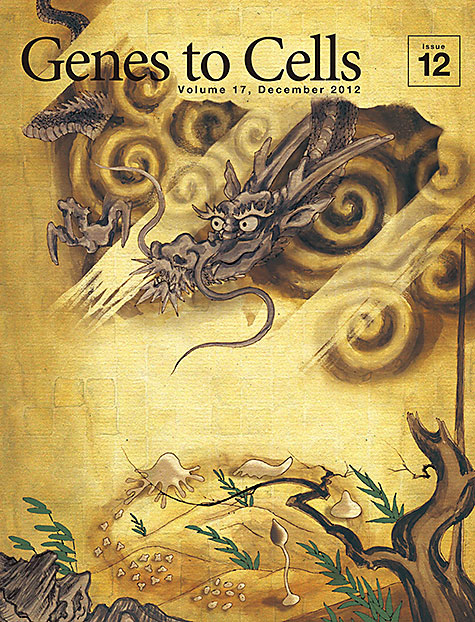
Die Erklärung dazu, auf der Innenseite des Covers:
“The cover art of this month […] describes how cellular slime molds assemble into a dragon. The cellular slime molds normally are individual of an amoeba-like unicellular organism. However, when they starve, tens of thousands of cells aggregate in one place to form a cluster. The cluster hugs the ground like a slug, searches for the right place for making spores, and forms a fluting body (lower part of the ground). When placed in starvation conditions, the cellular slime molds begin to secrete cAMP, which stimulates nearby slime molds to secrete pulses of cAMP. Once they secrete cAMP, they become inactive for a while. As the result, waves of cAMP propagate as they swing in a spiral form (upper part of the sky). “
Nett umgesetzt, oder? Und dies ist kein Einzelfall bei Genes to Cells, dem offiziellen Organ der Molecular Biology Society of Japan. Seit 2011 setzen die „Blattmacher“ das Titelthema des Heftes jedes Mal in ein ähnlich originelles Cover um. Einige weitere Beispiele:
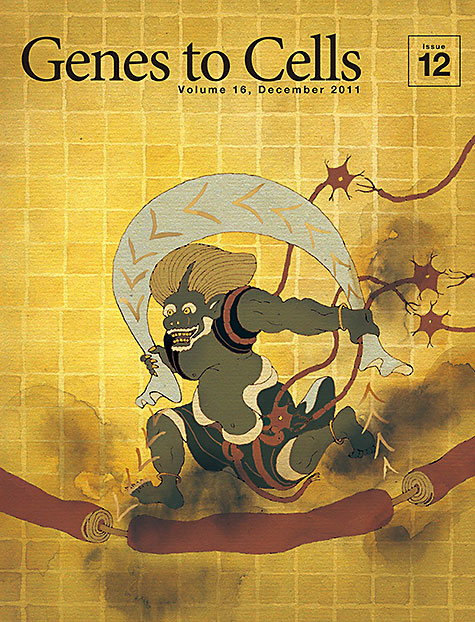
Since nerves of higher animals have myelin sheaths, an action potential is propagated rapidly (phenomenon called a saltatory conduction) like the swift wind. The wind god is likened to an action potential that conduct bounces to be propagated.
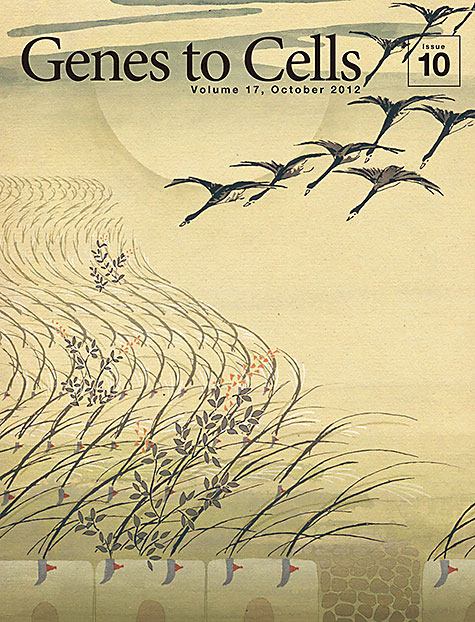
Cilia of eukaryotic cells undulate in a well-balanced motion and play a variety of roles essential to life. The cover art for this month’s issue presents movements of ciliated cells of respiratory epithelium in an analogy to Susuki glasses, a feature of autumn in Japan. The cilia beat in a given direction is defiend by the direction of basal feet (red) that protrude from basal bodies (gray). In the picture, waves to the right are generating a current. There is a goblet cell that secretes mucus, slightly right of the center on the near side of the picture. The moon and geese are also arranged in the picture so as to evoke another feature of autumn in Japan.
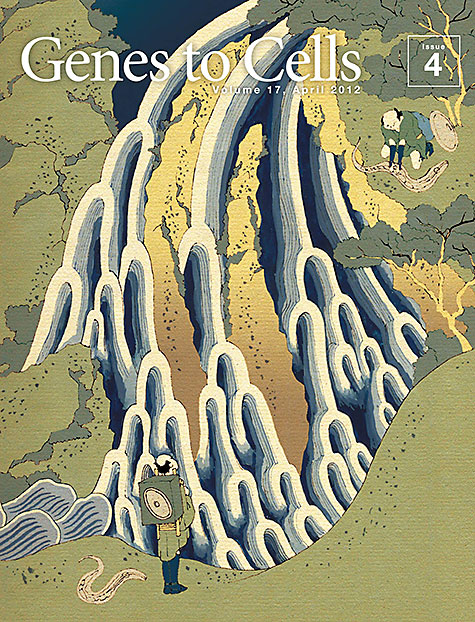
Branched waterfalls are reminiscent of the cell lineage of the nematodeCaenorhabditis elegans from a zygote to a newly hatched larva.
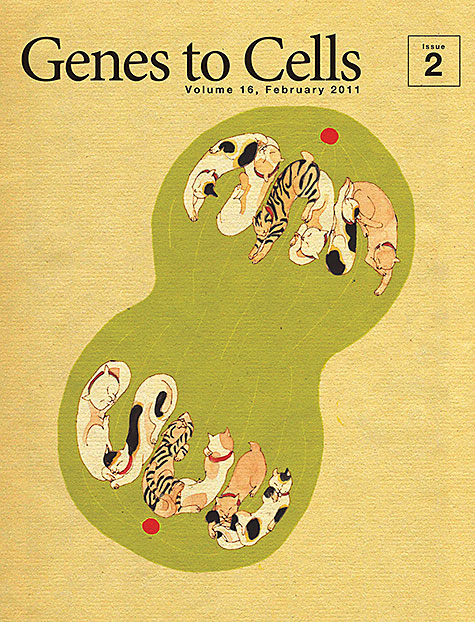
Two sets of segregated chromatids during telophase are depicted as cats cuddled up comfortably beside spindle poles.
Hat doch deutlich mehr als die üblichen Strukturmodelle oder leuchtenden Punkte im dunklen Schwarz irgendwelcher Zellen. Noch mehr Genes to Cells-Titelbilder gibt’s übrigens in der „Cover Gallery“ des Journals.
Schlagworte: Cover, Fachgesellschaft, Journal, Kunst, Molekularbiologie, Titelbild, Zellbiologie





